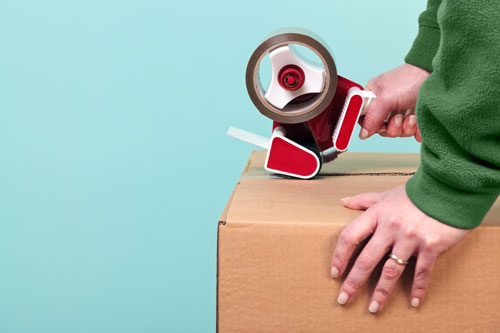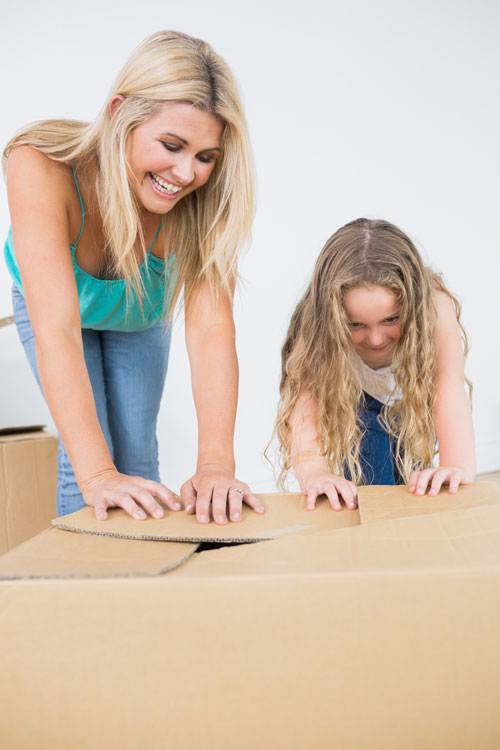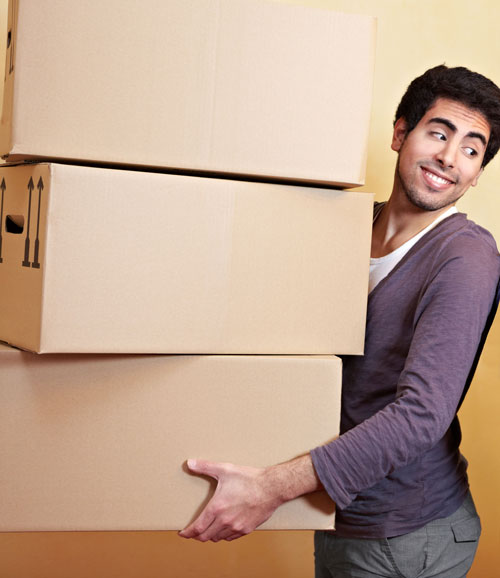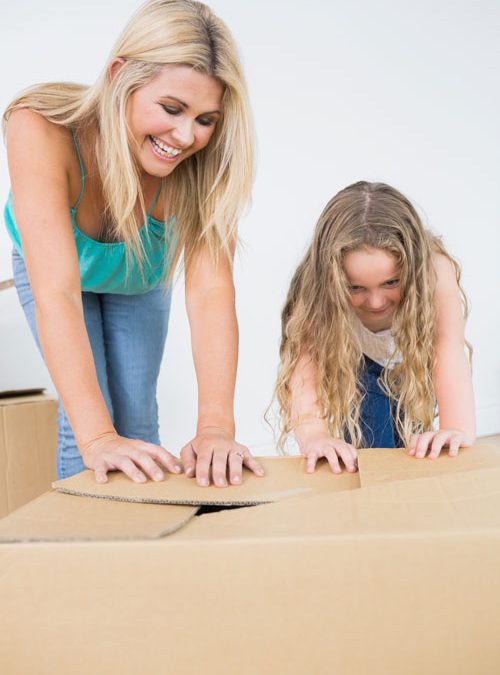Packing for a move is the most feared task when moving out – it takes forever to complete (time-consuming) and can exhaust you like no other job during the move (physically demanding).
In most cases, you’ll be packing up your belongings into cardboard boxes of various sizes. The good news (or the bad news for some people) is that it’s a very repetitive task – once you get the hang of it early, all you’ll need is patience and perseverance to get it done successfully.
How to pack boxes for moving?
The following 10 tips for packing boxes will guide you throughout the packing process:
Know the number and types of boxes you’ll need
Before you can start packing your boxes when moving out, you’re going to have to know the approximate number of cardboard containers you’ll need for the job. The reason for this is simple enough: if you prepare too few moving boxes, then you’ll have to interrupt the packing process in order to look for more.
According to statistics, the average number of boxes needed to pack the content of one home is around 60. The actual number of the boxes you’ll need for your packing needs is likely to be different depending on how much stuff you have for moving.
Also, what types of boxes will you need? In addition to using small, medium, and large standard cardboard boxes (and sometimes even extra-large ones), you may also choose to get specialty boxes such as wardrobe boxes, dish packs, and picture boxes.
Top 5 Tips for Moving Out for the First Time
Opt for free moving boxes
One good way to reduce the inevitable packing expenses is to get your moving boxes for free. The good news is that as long as you have enough time and you have the desire to go hunting for free moving boxes, then you shouldn’t have any problems scoring plenty of cardboard containers without paying for them.
But where can you find free moving boxes, you may ask?
First of all, ask your friends, work colleagues, or neighbors if they happen to have any cardboard boxes that they no longer need.
And secondly, get in touch with the largest retail stores in the area and ask them if they will be willing to give you any good boxes for free.
Finally, checking specialized websites as such Freecycle and Craigslist for free moving boxes is also a good idea that you shouldn’t dismiss too quickly.
Where to Get Free Packing Materials
Start packing your boxes ASAP
Without a doubt, the best way to pack boxes for moving is to do it without any delay. In other words, you should begin to pack your boxes as soon as the move is confirmed and it’s only a matter of time before moving day arrives.
But why should you start packing your things so quickly? The truth is that packing for a move is the most time-consuming task you’ll have to face, so the sooner you begin to work on it, the better your chance will be of completing it prior to the day of the move itself.
Initiating the packing job early will also decrease the level of the notorious stress when moving simply because you’ll know you can manage the tough task on time.
Inspect each box prior to using it
If you have bought brand-new cardboard boxes for your packing needs, then you don’t really need to inspect them too closely simply because they are new.
However, if you have decided to use second-hand containers during the packing process, then you must make sure each box is well-inspected before you start to fill it up.
- Dry. You should never use cardboard boxes that are not 100% dry. Also, if you notice any water damage on the container, you have to throw it away for recycling.
- Clean. Each box you use should be perfectly clean, without any signs of infestation. If a moving box has a bad smell, it’s a good idea to discard it as well.
- Strong. Use only cardboard boxes that seem sturdy enough to handle the load during transit.
Consider reinforcing the bottom of each box
When packing boxes for moving, it’s always better to be safe than sorry, so you should follow a few safety steps that will ensure there are no accidents of any sort on the day of the move.
One such precautionary measure is to reinforce the bottom and side corners of each box using strong packing tape. This is especially relevant when you’re using second-hand cardboard boxes because you just never know how strong they are until you lift them off the ground when full.
The packing tape will provide an extra boost to the overall sturdiness of the boxes and will eliminate the possibility of a container breaking due to the heavy load inside it.
Pad the bottom from the inside
Another safety measure that you should seriously consider when packing boxes for a move is to create a soft, insulating layer on the inside bottom of each box.
The idea, of course, is to ensure whatever is inside the carton will be well padded on the bottom every time the box is being put down on the ground or loaded up into the truck, or simply handled during the process of moving from one home to another.
You’ve got a few good options when it comes to padding the bottom of a box:
- You can use wads of crumpled paper to create the padding layer. Feel free to use newspapers instead of white wrapping paper simply because newsprint is virtually free of charge.
- You can use discarded pieces of bubble wrap to insulate the bottom for a safer packing experience.
Pack heavier items first
When packing fragile items for moving, one thing you should be careful about is to make sure you always place the heavier items on the bottom first. Once you do it, then the lighter items can go on top of them. This way, the heavier things (the ones that are usually stronger too) should be able to withstand the much less weight coming from above.
But if by mistake, you arrange the heavier things on top of the lighter ones, then damage is likely to be the logical result of your poor judgment decision.
This packing rule is especially relevant when you’re packing miscellaneous kitchen items that are almost always fragile and therefore – easily breakable during a house move.
How to Pack Glasses for Moving
Avoid making boxes too heavy
The best way to pack boxes when moving to a new home is to always use your common sense throughout the packing process.
One typical judgment error that can lead not only to property damage but also to personal injuries is when a box becomes too heavy to be handled safely. This is usually the result of people trying to cram too many relatively heavy things inside a single carton.
Be sure to keep boxes within the reasonable weight limit of 30-35 pounds. If you go above it, you’ll be running the risk of hurting yourself or getting one of your helpers hurt on moving day.
Remember: heavy items go into small boxes, and vice versa.
6 Big Moving Mistakes to Avoid on Your Move
Fill any empty spaces inside the boxes
One critical moment when packing boxes for moving is to ensure that there are no gaps inside among the packed things, especially when it comes to easily breakable items. During transport, nothing inside the containers should be moving around – if there’s any sort of movement, then your belongings inside are likely to get damaged.
Use wrapping paper, bubble wrap, packing peanuts, or even pieces of old clothing, including bath towels, to fill up any empty spaces inside the boxes. As long as your possessions have been wrapped in packing paper or bubble wrap prior to boxing, you can always use sheets of newspaper to fill those gaps, if any.
To test out the result of your packing effort, lift the packed boxes and shake them gently. In the best-case scenario, you should not feel anything moving around inside.
Label each box after filling it up
When you finish packing a cardboard box, you should take the time to label it appropriately.
Labeling boxes when moving is more important than you think – a mere minute spent writing the content and destination room on each carton can save you hours of opening up random boxes in the new home.
What’s more, having each box labeled correctly will ensure that it’s delivered to the corresponding room in the new place and not just piled up in the center of the largest room. Moving boxes look the same so it’s almost impossible to memorize what’s inside each one just by their external look.
So, take a black marker and label each box as soon as it’s filled. If necessary, add handling instructions such as FRAGILE, HANDLE WITH CARE, or THIS SIDE UP.






